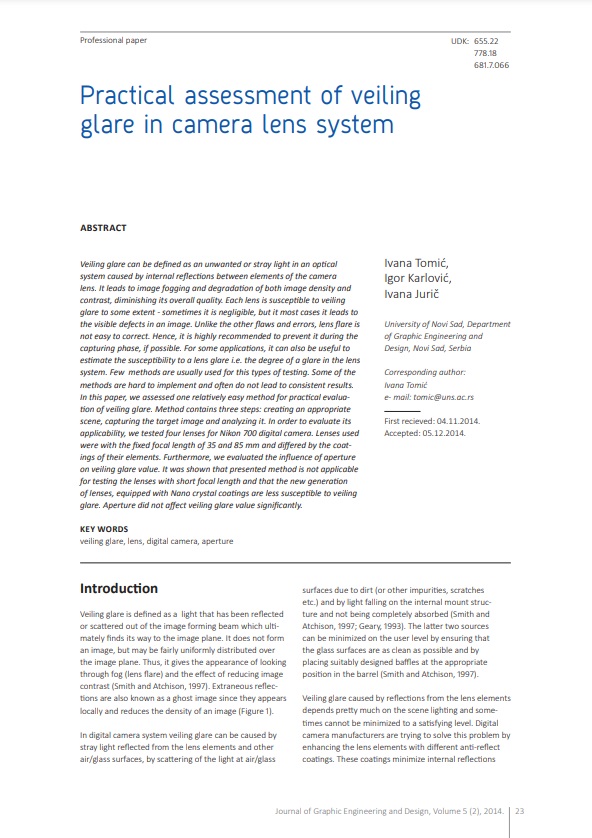
Published 2023-09-30
abstract views: 259 // Full text article (PDF): 352
Keywords
- veiling glare,
- lens,
- digital camera,
- aperture
How to Cite
Copyright (c) 2014 © 2014 Authors. Published by the University of Novi Sad, Faculty of Technical Sciences, Department of Graphic Engineering and Design. This article is an open access article distributed under the terms and conditions of the Creative Commons Attribution license 3.0 Serbia.

This work is licensed under a Creative Commons Attribution 3.0 Unported License.
Abstract
-
Veiling glare can be defined as an unwanted or stray light in an optical system caused by internal reflections between elements of the camera lens. It leads to image fogging and degradation of both image density and contrast, diminishing its overall quality. Each lens is susceptible to veiling glare to some extent - sometimes it is negligible, but it most cases it leads to the visible defects in an image. Unlike the other flaws and errors, lens flare is not easy to correct. Hence, it is highly recommended to prevent it during the capturing phase, if possible. For some applications, it can also be useful to estimate the susceptibility to a lens glare i.e. the degree of a glare in the lens system. Few methods are usually used for this types of testing. Some of the methods are hard to implement and often do not lead to consistent results. In this paper, we assessed one relatively easy method for practical evaluation of veiling glare. Method contains three steps: creating an appropriate scene, capturing the target image and analyzing it. In order to evaluate its applicability, we tested four lenses for Nikon 700 digital camera. Lenses used were with the fixed focal length of 35 and 85 mm and differed by the coatings of their elements. Furthermore, we evaluated the influence of aperture on veiling glare value. It was shown that presented method is not applicable for testing the lenses with short focal length and that the new generation of lenses, equipped with Nano crystal coatings are less susceptible to veiling glare. Aperture did not affect veiling glare value significantly.

